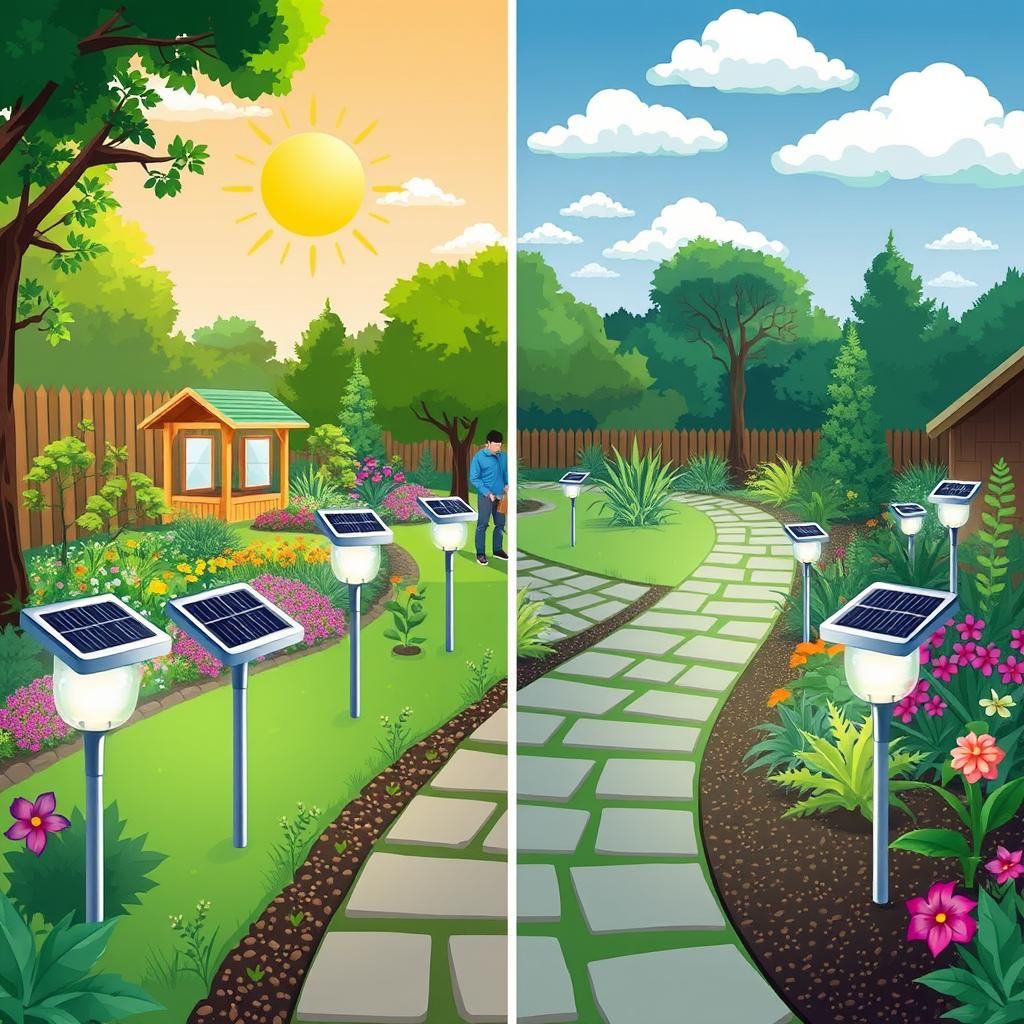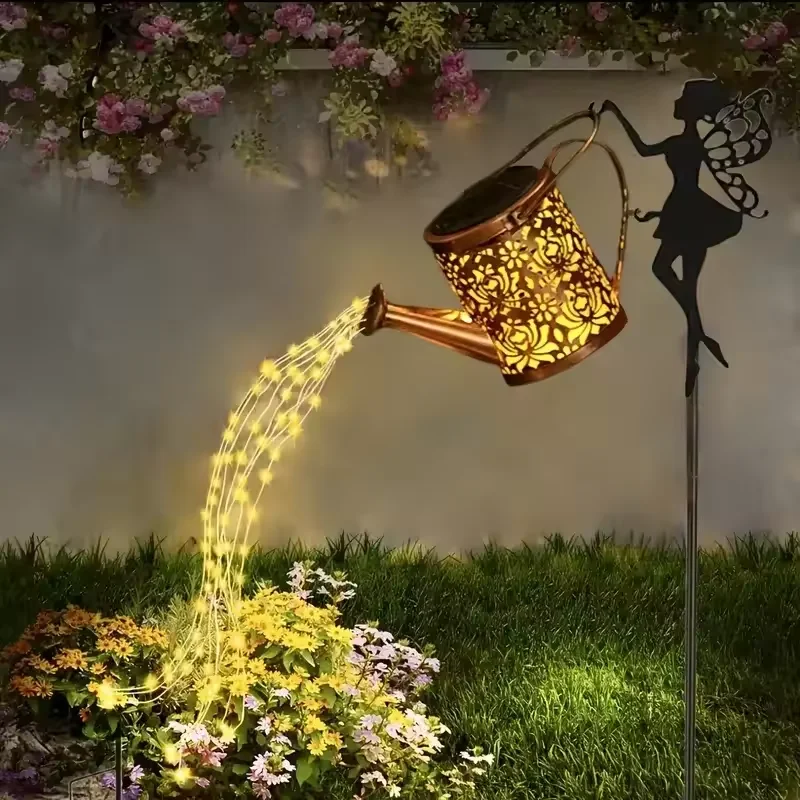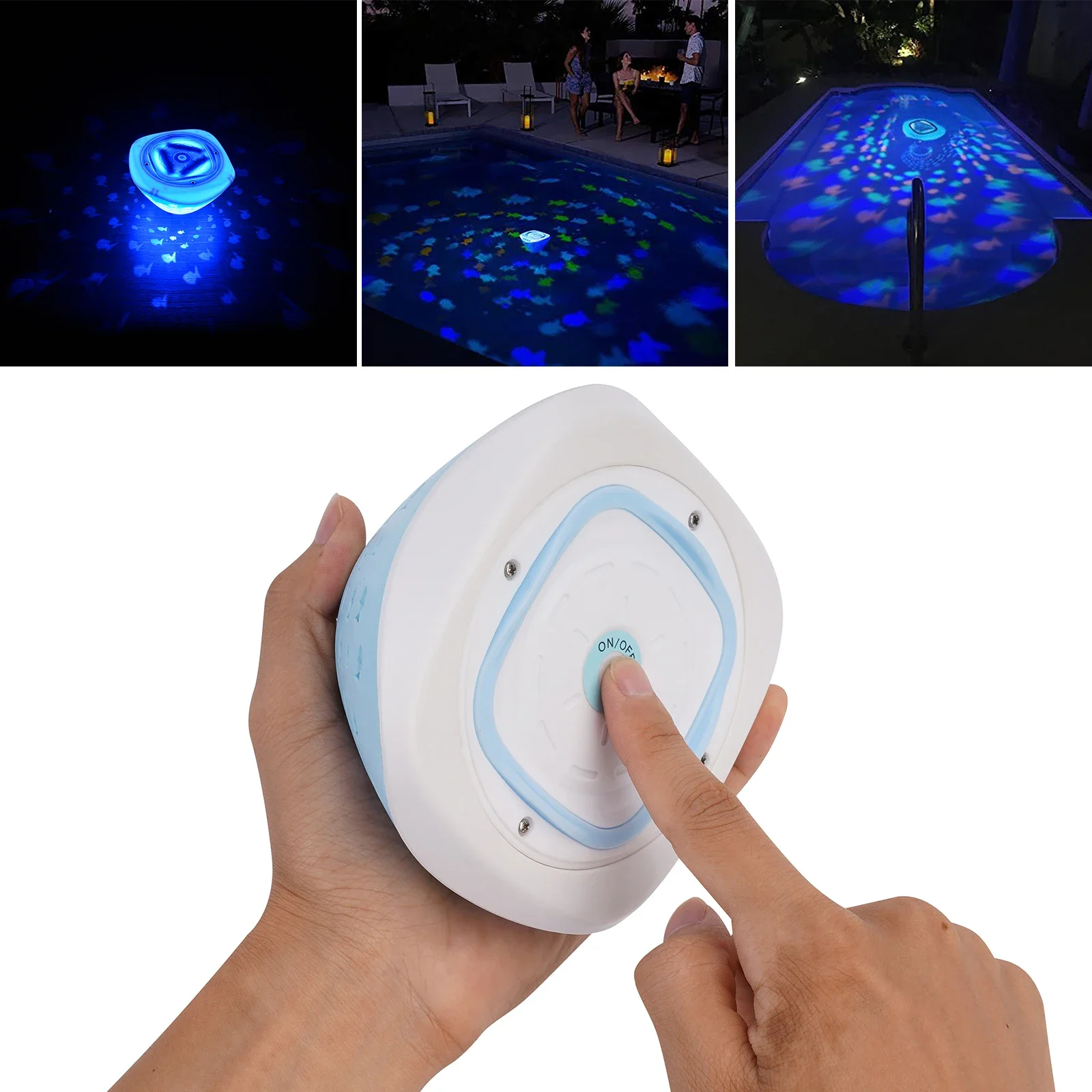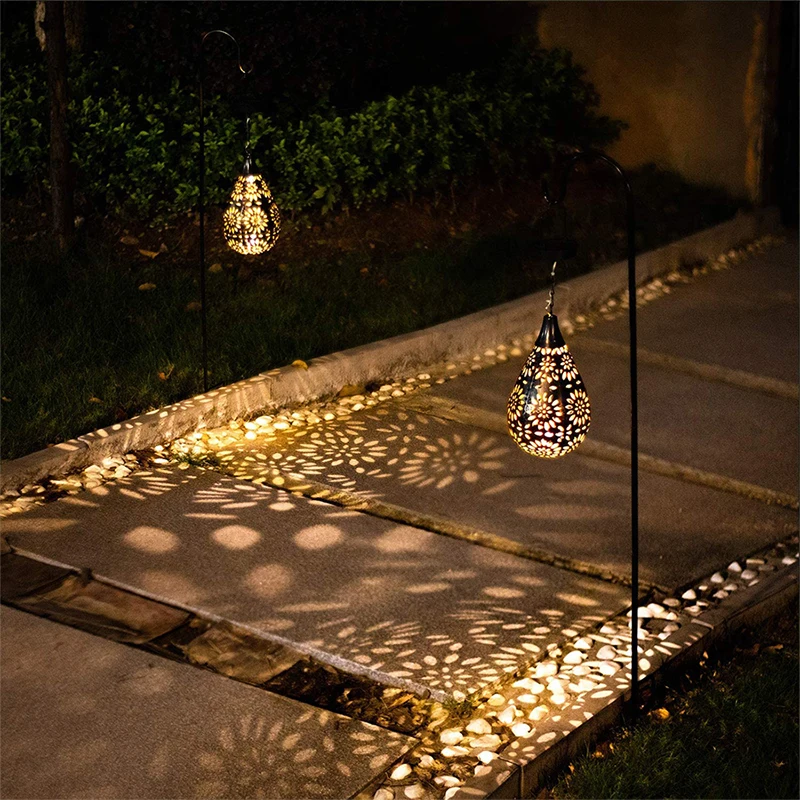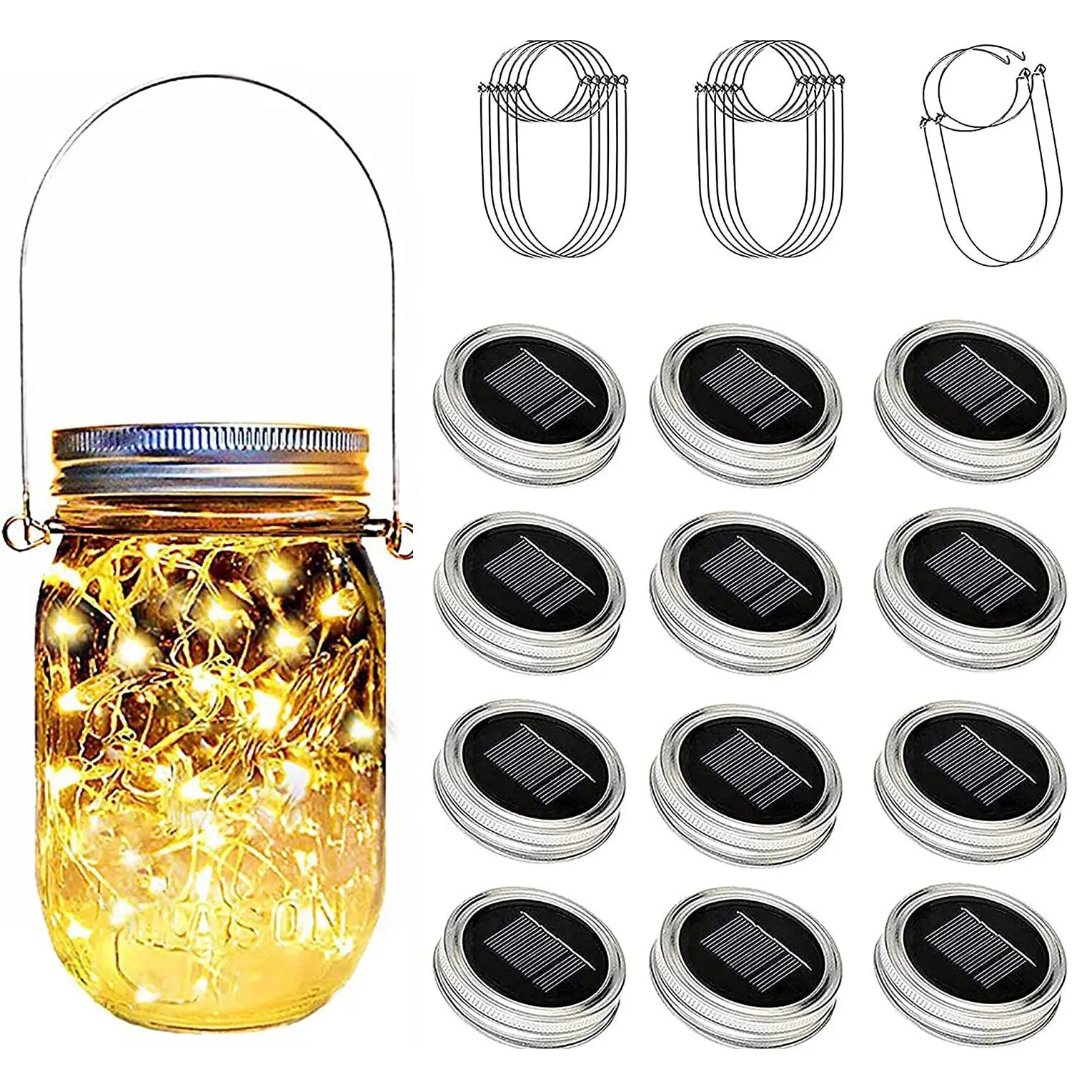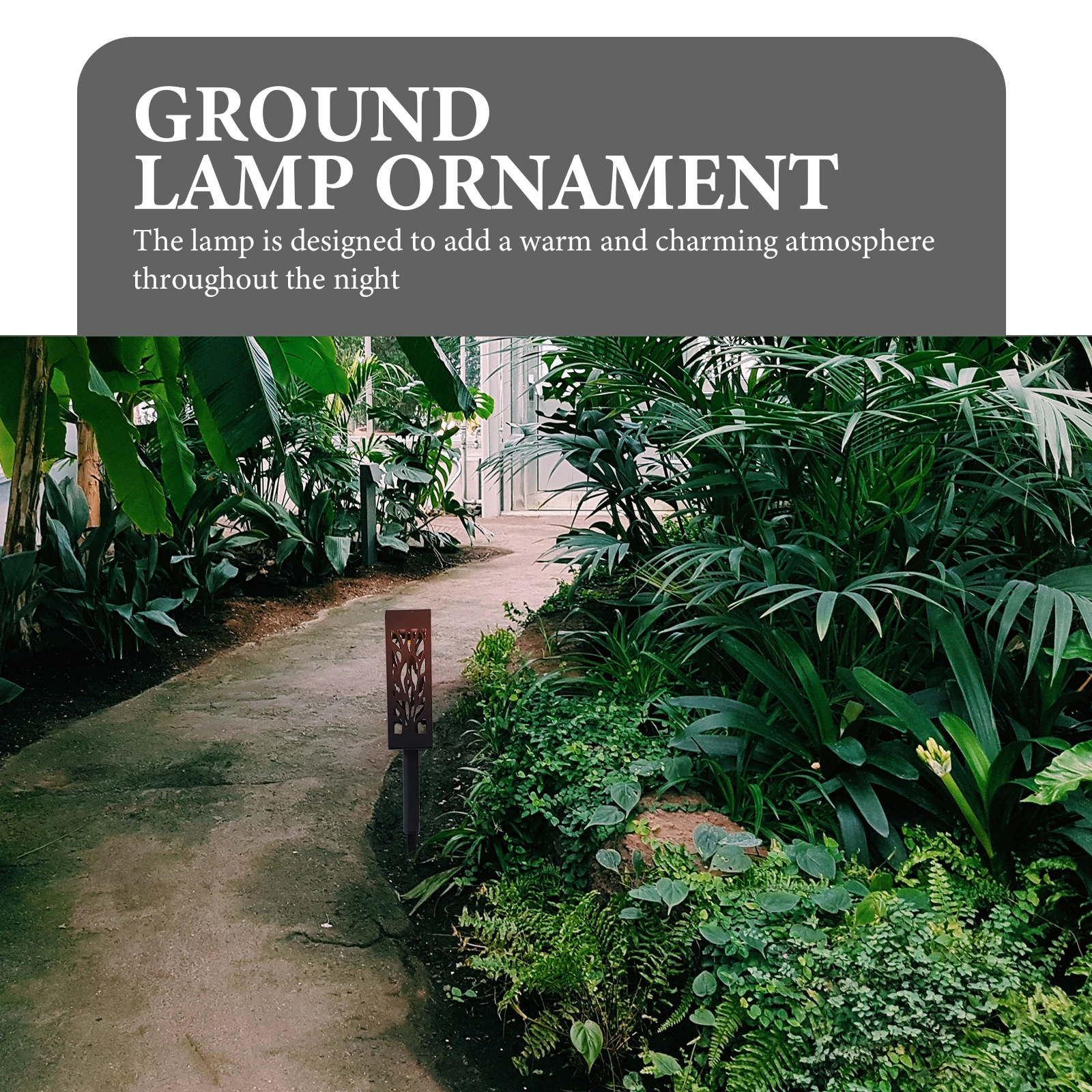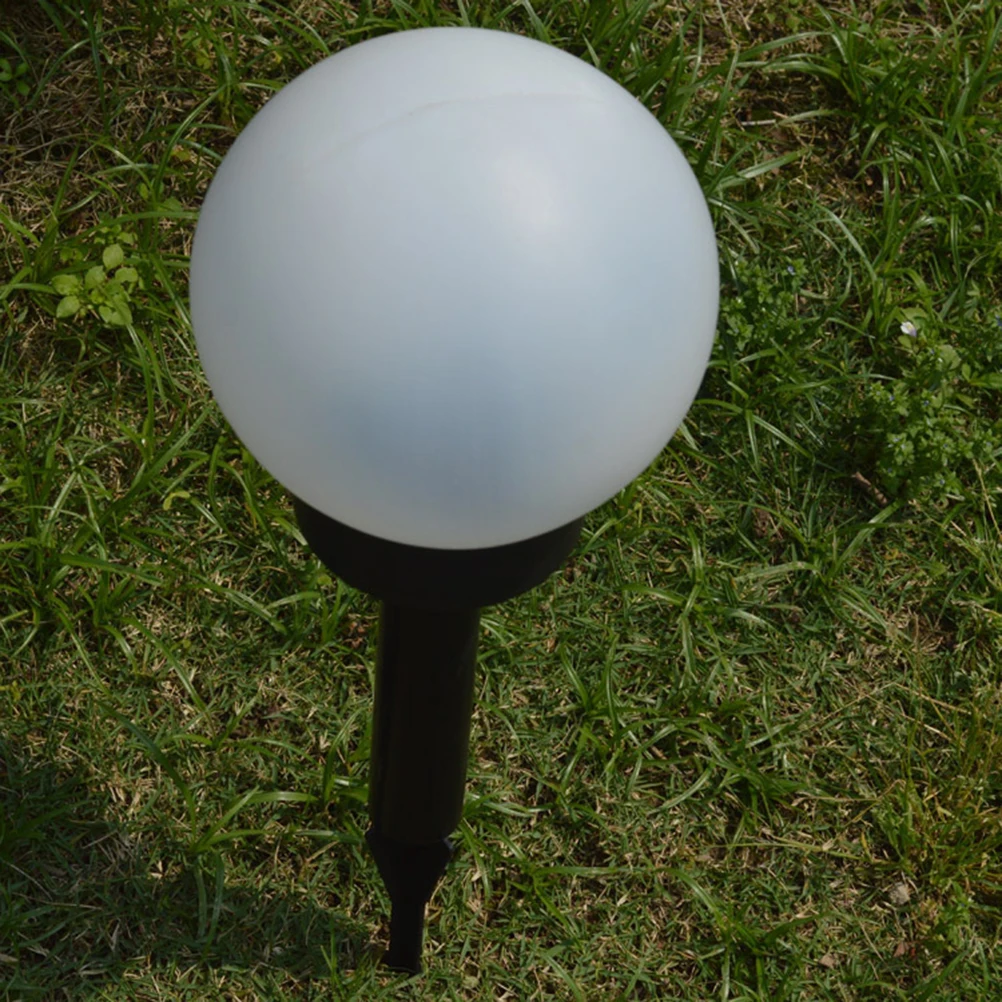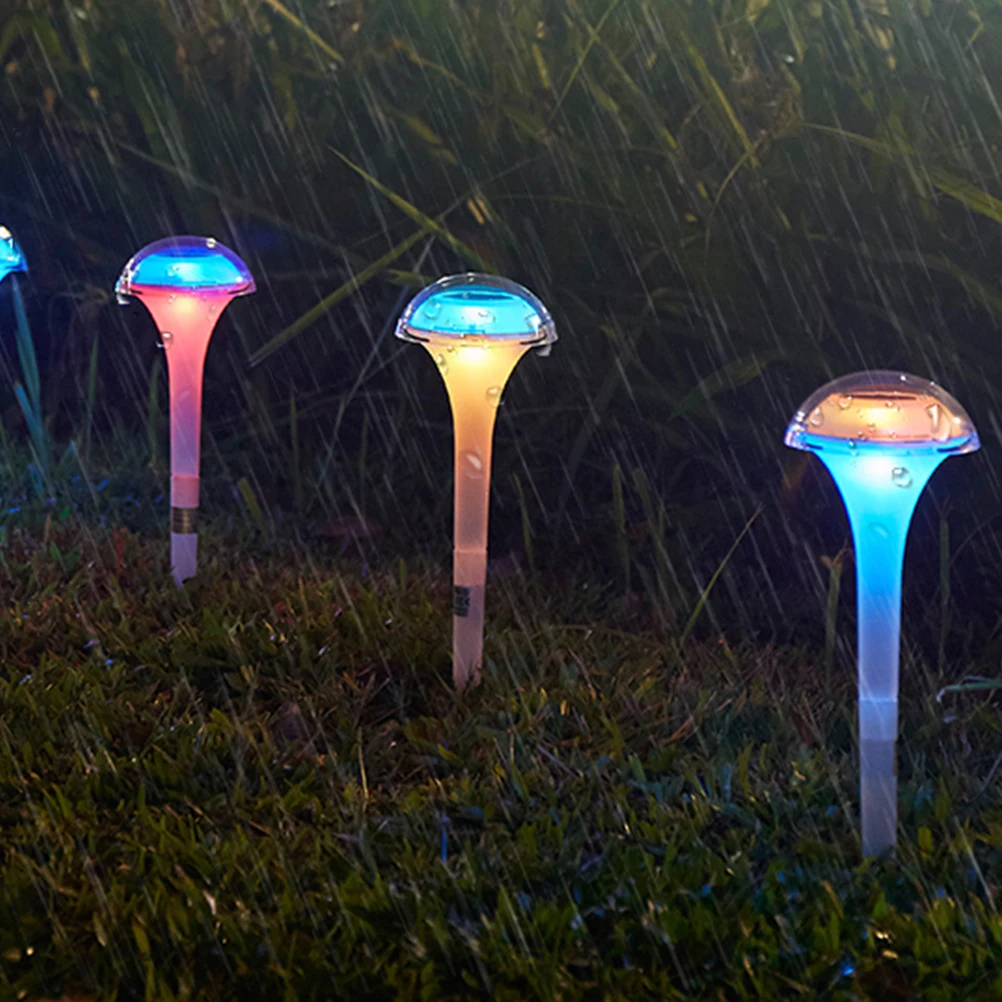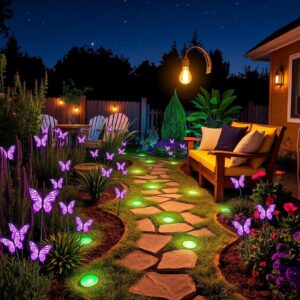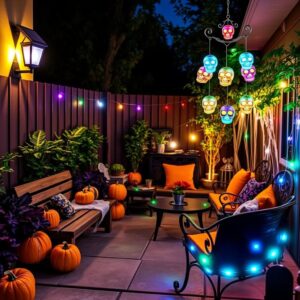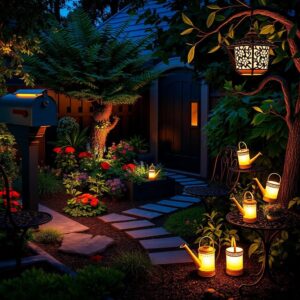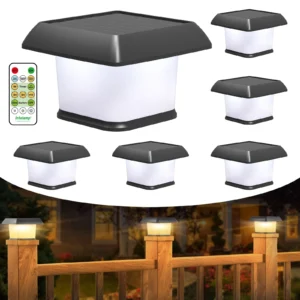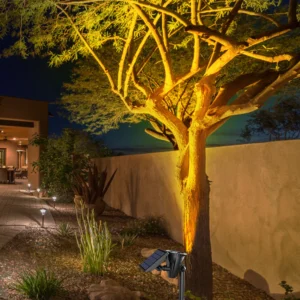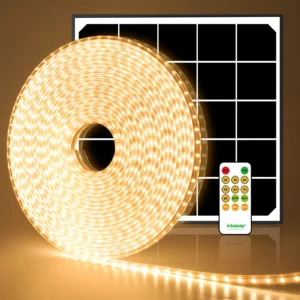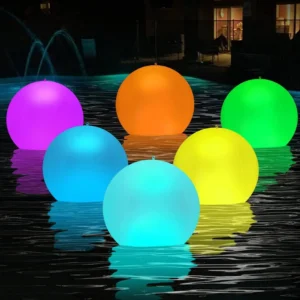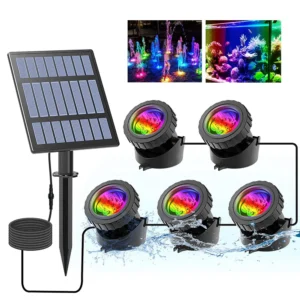Solar Fairy Watering Can Lights – Vintage Outdoor Garden Decor
Introduction
Overview of Solar-Powered Lighting
Imagine you’re stepping into your backyard at dusk. The air is cool, the sky’s fading from blue to deep navy, and where you once had only shadows, now pathways and flowerbeds glow gently beneath solar lanterns. Solar-powered lights work their magic not with plugs and power bills, but by soaking up sunlight during the day and turning it into a warm, welcoming glow at night. Here’s the simple trick: each light has a small solar panel that captures sunlight, stores that energy in a rechargeable battery, and then releases it after dark. No wires, no hassle—just quiet, sustainable light.
Over the past few years, solar-powered lighting has blossomed in popularity for gardens, patios, driveways, and even balconies. Maybe you’ve seen a neighbor’s pathway lined with stake lights, or maybe you’ve admired lanterns hanging from a pergola, twinkling like distant stars. The appeal is obvious—solar lights are quick to install, friendly to the environment, and create an instant sense of cozy outdoor magic. As more of us look for simple ways to enhance our outdoor spaces and cut back on our carbon footprints, these sun-powered solutions are showing up everywhere.
Why the Question Matters
But here’s where things get tricky—there’s a lot of chatter and confusion about how solar lights really work. Do solar-powered lights need direct sunlight to shine? Or can they thrive on cloudy days, or tucked beneath the leafy shade of a big oak tree? Maybe you’ve installed some lights with high hopes, only to find them flickering or fading before midnight. Often the culprit isn’t the lights themselves, but how and where they’re used.
That’s why understanding the basics isn’t just for the ultra-green or the gadget geeks. It matters for anyone who wants to make the most of their outdoor space—gardeners plotting out a moonlit veggie patch, families lighting up backyard game night, or anyone dreaming of a welcoming, eco-friendly entrance. Knowing the real rules about sunlight, shade, and charging conditions pays off. You’ll dodge disappointment, save money, and unlock all that enchanting, effortless glow solar-powered lights promise.
So before you scatter those stake lights or hang up a string of solar bulbs, let’s clear away myths and set the facts straight. With a little know-how, you’ll get the most out of every sunbeam… and every magical evening outdoors.
Floating Pool Lights – 4 Colors 5 Modes Waterproof Underwater Lights
Do Solar-Powered Lights Need Direct Sunlight?
Ever wondered if those sleek solar stake lights in your garden are doomed on overcast days, or are they still quietly sipping sunlight behind the clouds? Here’s the straight answer: solar-powered lights thrive on direct sunlight, but they aren’t completely down for the count in less-than-perfect conditions.
Let’s start with the basics: solar lights use small panels to soak up sunlight, turning it into energy that’s stored in rechargeable batteries. The stronger and more direct the sunlight, the more juice these batteries collect by sunset. Picture solar panels as hungry sun-sponges—full, blazing midday sun gives them the best meal. That means, when you position a solar light in a spot that basks in several hours of uninterrupted rays, you’re giving it prime charging real estate. The result? Brighter lights, and longer glows that easily carry you from barbecue to stargazing.
But life isn’t always crystal-clear skies and open fields. Enter the reality of filtered light—places shaded by trees, outbuildings, or heavy cloud cover. Can your solar lights still work their magic here? Absolutely—just not at their maximum charm. Solar panels can charge under indirect or filtered light, though they’ll work at a reduced pace. Instead of a power-packed battery by dusk, you may get something closer to 10–25% of their peak capability (Solar Reviews). On cloudy or shaded days, the lights still flip on, just dimmer and for fewer hours. Want specifics? That magical garden path may stay lit for 3–5 hours instead of the full-night glow you expect in high summer.
This isn’t a total dealbreaker, it’s just a cue to think smart about placement: morning sun over afternoon shade is better than all-day dimness. Rotate your solar lights around until you find a patch of reliable daylight. By the way, tiny adjustments—a shift from under a shrub to just beyond its edge—might make all the difference. For a comprehensive breakdown of how solar lights respond to different exposures and savvy installation tips, check out the in-depth guidance from Queneng Lighting.
Bottom line? Solar lights prefer direct sunlight, but they’ll keep humming along in the shadows—just with a softer spark. If you want them at their brightest, give them all the sun you can. If your garden plays hide-and-seek with sunlight, expect them to glow gently rather than dazzle. Either way, you’re still inviting a piece of sun-powered magic into your outdoor space.
Outdoor Solar Chandelier | Solar Pendant Light with Metal Carvings
Common Myths About Solar Lights
Let’s pull back the curtain on some of the most stubborn myths dancing around solar-powered lights. If you’ve ever wondered whether a cloudy day spells doom for your glowing garden path, or if a shade-loving shrub means solar lights are hopeless, you’re in good company. Here’s where the facts step in and the fog of misconception fades away.
Myth: Solar Lights Don’t Work on Cloudy Days
A graying sky doesn’t put your solar lights completely out of commission. While it’s true that direct sunshine fuels those little panels best, the idea that solar lights just quit on a cloudy day is pure fiction. Even with the sky softened by clouds, enough diffused sunlight still finds its way through to charge the battery, though at a slower pace. On those moody, overcast afternoons, energy collection takes a hit—expect efficiency to drop to around 10–25% of what you’d get on a bright, sunny day (Energy.gov, Solar Reviews). But come nightfall, your garden path or flower bed can still sport a gentle, enchanted glow.
Myth: Solar Lights Cannot Charge in the Shade
Shade isn’t a complete dealbreaker, either. Sure, solar panels are sunseekers by nature—they thrive when basking in direct light. But pull a little dappled shade overhead, or let them rest beneath a leafy canopy, and they’ll still soak up what they can. Studies and tests from lighting specialists show that solar lights can charge in the shade, but much more slowly (LEDDictive Lighting, Truelumens). Think of it like sipping energy instead of gulping—a trickle charge that might mean only a few hours of nighttime glow, depending on how deep the shade runs.
Some clever gardeners even use solar lights indoors, set on windowsills or under skylights. In these spots, the magic still happens, albeit with more patience and tempered expectations. Shade and indirect light mean less stored energy, so you won’t get the longest glow, but you can still enjoy a bit of that solar sparkle.
Myth-busting, in this case, doesn’t mean promising solar lights will outshine the sun itself on gloomy or shaded days. Instead, it’s about understanding the balance: solar lights are reliable, flexible, and surprisingly resilient—just a little less dazzling when the sky (or a leafy tree) gets in their way. So next time clouds gather or your favorite spot falls under an arbor, know that while output may dim, the magic of solar light doesn’t disappear entirely.
96 LED Solar Willow Vine Light for Outdoor Decor
Performance of Solar Lights in Shade and Cloudy Conditions
Solar Lights in Shade
You dream of solar lights weaving a soft glow through your garden, only to discover your favorite spots are shielded by leafy canopies or garden walls. Do solar lights still shine when shade claims the day? They do—but with a little less sparkle.
Here’s the straightforward truth: Solar lights will charge in the shade, but they take longer to soak up enough energy to run all night. Sunlight that filters through branches or bounces off fences is weaker than full sun. That means the solar panel charges at only 10–25% of its potential, according to studies like the one from WosenLED. The result? You’ll get a shorter, dimmer glow after sundown—sometimes just a few evening hours instead of the whole night.
In deep shade, such as under dense trees or tight corners by the house, solar lights struggle even more. Their batteries may not fully charge, leaving you with just a faint twinkle at dusk or none at all by midnight. Think of shaded gardens as the “slow lane” for solar charging: you’ll see some results, just not the lush glow that full sun can spark.
But don’t rule out these cozy corners entirely. Even in a dappled woodland border, you can still enjoy pockets of solar magic. Try placing your solar lights where they catch a few stray sunbeams during the day—morning or afternoon sun is better than none. You can also rotate solar panels toward the biggest break in the shade, nudging every bit of sunlight into those hungry little cells.
Solar Lights on Cloudy Days
Cloudy days roll in, and you wonder: will your solar lights surrender to gloom? Not quite. Even under a sky thick with clouds, solar panels catch enough diffused sunlight to charge, but expect a noticeable drop in performance. Unlike shade, where obstacles block most light, clouds scatter light evenly, letting panels keep working but at a lower efficiency.
Most solar lights will operate at about 10–30% of their normal charging rate when sunshine is hidden behind thick clouds (see Solar Reviews for data). This means your evening display will glow softer and may fade earlier—perhaps just lighting up your patio for dinner rather than late-night talks under the stars.
Persistent cloudy weather? Try a few simple strategies: Choose solar lights with larger or higher-efficiency panels, since they soak up more energy even when sunlight dips. You can also move lights around to chase any fleeting sunbreaks, or cluster panels in the brightest, least obstructed parts of your garden.
Don’t let grey skies or leafy havens dim your solar dreams. Whether basking in occasional sunshine or braving a season of shade, solar lights can still bring evening charm—just with a gentler glow and mindful placement. When in doubt, think like sunlight: seek out every available ray, and your garden will shimmer on.
Solar Powered Mason Jar Lid Insert Fairy Lights for Decor
Tips for Maximizing Solar Light Performance
So, your dream is a garden that glimmers—no matter what the weather throws at you or how many tall trees line your fence line. Maximizing your solar lights’ performance isn’t just about where you put them, but how you care for them and what you choose in the first place. Here’s how to keep your outdoor oasis glowing, night after night.
Placement and Positioning
Let’s start with the basics: solar lights are sun worshippers, plain and simple. The more direct sunlight their panels soak up during the day, the brighter and longer they’ll shine after dusk. The sweet spot? South-facing areas that bathe in the sun for 6–8 hours. Scan your garden for shadows—tree branches, fences, or even patio umbrellas can cut into charging time. If you want path markers or accent lanterns deeper into the shade, look for places that get at least some dappled sunlight throughout the day. When possible, tilt the panels toward the sun’s midday position for a little extra charge-up—sometimes just angling them on a slight incline helps, especially on shorter winter days.
Maintenance for Peak Efficiency
Even the best-placed solar lights dull if you forget about them. Dust, pollen, bird droppings, or a fine layer of grime can blanket your solar panels, stealing away vital sunlight. Wipe them down with a soft cloth every other week—a quick job that keeps the light strong and steady. After the leaves fall or when the seasons change, check for new sources of shade, tangled-up plants, or winter debris. Clearing the way keeps every stray ray working in your favor. And if your region gets hit with snow, gently brush panels off just like you would a windshield.
Choosing the Right Solar Lights and Batteries
Not all solar garden lights are created equal. Some can handle less-than-perfect sunlight better than others. If you garden in a cloudy region, lean toward lights labeled for “high efficiency” or “low-light performance.” It pays to read the packaging or reviews for hints on how well the lights handle shade or overcast days. When it comes to batteries, bigger isn’t always better, but higher-capacity rechargeable batteries stretch your lights’ endurance after a gloomy day. If your trusty lanterns start fading earlier than they used to, it might be time for a battery swap—a simple upgrade that can breathe new life into every fixture.
Creating an enchanting, solar-lit outdoor space isn’t magic; it’s just a blend of smart positioning, a little upkeep, and picking the right tools for your unique garden. So go ahead—give your solar lights the best possible shot at soaking up the sun, and let your evenings bloom bright, rain or shine.
2 pcs Solar LED Ground Lamp – Easy Install, Durable, Warm Light
Understanding Solar Panel Efficiency
How Efficiency Impacts Operation
Let’s strip away the jargon: solar panel efficiency is simply how well your panel converts sunlight into electricity. Imagine it as the “greenness quotient” of your lights—higher efficiency means more of that golden daylight gets captured and used, fueling longer and brighter nights in your garden. Most garden solar lights use small photovoltaic (PV) panels, and here’s the rub: not all panels are created equal.
The amount of energy your solar light gathers depends on several surprisingly practical factors. Panel quality can vary; some modern designs use high-efficiency monocrystalline cells, while more affordable units might use polycrystalline or thin-film panels. Differences can be stark—top-tier panels might convert up to 22% of sunlight, while budget models linger closer to 10–14%. Tiny details matter, too: a clean, unobstructed panel sips sunlight more eagerly, while dust, leaves, or weathered surfaces dial things down.
And when clouds roll in or your panels bask in leafy shade? Efficiency takes a dip, sometimes collecting just a fraction of their potential energy. As a result, low-efficiency panels and older technology can leave your path or patio a little dimmer after gray days or under the dappled canopy of a favorite tree. This is why understanding and choosing efficient panels isn’t a fussy technicality—it’s the backbone of getting the longest, brightest glow out of your solar lights, especially when the sun is shy.
Adaptations for Low-Sun or Shady Areas
But what if your dream garden corner doesn’t get sunbaked all day? Good news: the world of solar lighting is adapting with clever tech and thoughtful design. Some solar lights are now built for precisely these “low-light” environments, using upgraded panels and electronics to sip every possible photon. Advanced models might feature “amorphous” or “thin-film” PV panels, which can wrestle usable energy from even overcast skies or gentle, indirect daylight.
Innovative battery solutions help too. Lithium-ion and LiFePO4 (lithium iron phosphate) batteries store more energy, giving your lights better runtime even after less-than-perfect charging days. Some manufacturers offer external or remote panels you can place in sunnier spots while keeping your actual lights tucked in shadier refuges—think of it as sun-chasing for your garden’s most enchanting corners.
If your space is extra shady, look for solar lights marketed specifically for “low light” or “cloudy weather” performance. These might cost a bit more but repay you in sparkling evenings and greater reliability. So, whether you’re lighting up a pergola draped in vines or a leafy side garden, modern solar light innovation means you’re not at the mercy of direct sunlight. In other words: solar magic can still happen—even on the cloudiest days or beneath your favorite tree.
Solar Lanterns LED Outdoor Garden Yard Decoration
Environmental Impact of Solar Lights
Sustainability Benefits
Imagine your garden glowing gently long after sunset, all without a single watt drawn from the grid. That’s the quiet magic of solar-powered lights—working silently, soaking up the day’s sun, and then scattering it back as golden ambiance after dusk. But beyond their beauty and convenience, solar lights offer a clear eco-friendly upside that’s tough to beat.
When you swap out wired or battery-powered lights for solar fixtures, you make a direct dent in energy use and carbon emissions. Each little solar lantern or stake light works tirelessly off the sun’s free energy, requiring nothing from coal plants or fossil fuels. Over weeks and months, this adds up: fewer kilowatt-hours needed, less pollution spewed skyward, and far less strain on electrical grids frazzled by summer demand spikes. According to EA Global, solar technology—at every scale—cuts greenhouse gas emissions significantly when compared to traditional, grid-dependent lighting.
On top of that, solar lights are inherently low-impact. There’s no tangled wiring to dig into the earth, no extra burden on local infrastructure, and, after installation, almost no operational emissions at all. You charge during the day, shine by night, and tread so lightly the planet barely notices.
Comparing Solar Lighting to Traditional Options
Let’s look at the bigger picture: are solar lights always the most “green” choice, even when clouds linger or your garden is more shade than sun? Lifecycle analyses say yes. While the initial manufacturing of solar lights does have a carbon footprint (as all products do), the ongoing operational impact is nearly zero. Traditional outdoor lights—think halogen, incandescent, or even most LED fixtures—pull energy from the grid every night. In most regions, some portion of that electricity is generated from fossil fuels, meaning your glowing garden comes with an invisible environmental price.
Solar lights, by contrast, become net-positive pretty quickly. Once manufactured, they use only what the sun gives—no perpetual power drain, no recurring emissions. Even on cloudy days or in less-than-ideal locations, solar lights still draw daylight, often enough to deliver a pleasant nighttime glow. The result: over their lifetime, solar path lights or lanterns produce fewer emissions, require less infrastructure, and need less maintenance than their wired counterparts.
Ultimately, choosing solar lighting means inviting sustainability into the heart of your outdoor spaces. Whether your yard is sun-soaked or softly dappled, solar-powered lights let you enjoy every twilight hour knowing you’re part of the solution—one cozy, illuminated garden at a time.
2pcs Solar Mushroom Lights – Outdoor Garden & Patio Lighting
Conclusion
Key Takeaways
When the evening settles and your garden glows, here’s the bottom line: solar-powered lights don’t absolutely need direct sunlight, but they sure do love it. The myth that they quit working without full sun? That’s busted. Yes, direct rays help them charge fastest and shine longest, but these little lights can still sip energy from cloudy skies or bits of daylight filtered through leaves. Your lights won’t burn as bright or last as long in deep shade or drizzly weather—science says output drops to 10–25% in those conditions—but they won’t leave your path entirely in the dark either.
Here’s the reality: solar lights are surprisingly resourceful. They make the most out of whatever light the day brings, and modern designs have come a long way in squeezing power from even a cloud-draped sky or a spot just outside the sun’s reach. No garden needs to miss out on that gentle, inviting glow.
Practical Steps for Homeowners and Gardeners
Ready to turn your outdoor spaces into an effortlessly glowing retreat? Keep these spartan, practical steps in mind:
- Spot selection matters: Position solar lights where they’ll soak up the most sun—think open edges, fence posts, or garden beds clear of heavy tree cover.
- Angle for advantage: Aim your panels towards where the sun travels the longest each day.
- Keep them clean: Dust, pollen, and leaves block precious sunlight. Wipe panels every few weeks, especially in pollen season.
- Seasonal shuffle: Notice longer shadows in winter? Move your lights or trim overgrown branches so they get more daytime exposure.
- Choose the right gear: If your space is shady most of the day, opt for lights labeled “low-light” or with high-quality panels and batteries built for variable conditions.
- Battery health: Replace old batteries every few seasons to keep that nightly glow strong.
In short: solar lights might not always burn with midsummer intensity, but with a little care, they’ll still fill your garden with warmth and eco-friendly sparkle—rain or shine.
Further Reading and Resources
Curious to dig deeper or fine-tune your setup? Explore these resources for expert guidance and inspiration:
- Do Solar Lights Need Direct Sunlight or Just Daylight? – Queneng Lighting
- Do Solar Panels Work on Cloudy Days or at Night? – Solar Reviews
- Will Solar Lights Charge in the Shade? – WosenLED
- Busted: Common Solar Myths and Misconceptions – Energy.gov
- Do Solar Lights Really Work in the Shade? – LEDDictive Lighting
- Can Solar Lights Charge in Shade? – Truelumens
- Maximize Solar Light Applications in Low Sunlight Areas – AGCLED
- Environmental Impacts of Solar Energy – EA Global
Let these glow up your next outdoor project, and remember: every night, your garden deserves a little bit of solar magic.

